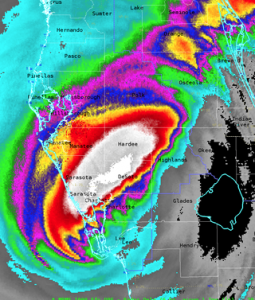We all witnessed Hurricane Ian come ashore twice in the US wreaking havoc in Florida, Georgia, and South Carolina, leaving more than 2.5 million without power and wreaking gut-wrenching, incomprehensible destruction.
Florida had never seen a storm surge of that magnitude. Governor DeSantis called it “basically a 500-year flood event.” Fort Myers Beach and nearby communities were leveled by the Category 4 storm with maximum sustained winds of 150 mph.

As the official death toll continues to climb, estimates for the damage from Hurricane Ian continue to climb. A recent CNBC estimated that total to be $47 billion.
Such natural disasters underline the need for all businesses to have a business continuity and disaster recovery plan to ensure a speedy recovery. FEMA estimates that 40% of businesses that do not have such plans in place, never recover after such a disaster. Then for those that do, only 29% were still operating after two years.
Having such plans in place and being properly insured for property damage and business interruption coverages, help ensure the success of reopening your business one day.
What if a natural or man-made disaster happen the second you finished reading this article, would your business recover? Are you prepared? What would be your first phone call? Would your phone work?
In my profession as a safety and risk management professional, I am constantly questioning and addressing business owners’ disaster recovery plans, because if you aren’t planning to recover, then you are more than likely planning to go out of business.
After such an event, many business owners don’t even know where to begin. Is their information stored somewhere in the cloud, or was it washed or blown away during the disaster? How will you manage your employees, and after you do rebuild some 2 years later will they even come back to work for you, but more importantly will your customers or dis a competitor fill that void while you were spinning your wheels?
If you manufacture a product, how soon before you can find, purchase, and ship in the special equipment or supplies to make your product? Will you have energy restored promptly, or do you need to go find backup generators, and for how long and how will you find fuel for those generators?
Maybe you survived the disaster, but did your customers, vendors, or suppliers? Do you have backup vendors, do you have their contact information, and with the supply chain issues how long will it take to receive such supplies? If you are still somewhat operational, how will you contact and communicate with your employees or customers for that matter?
All these questions will need to be answered and contingencies need to be developed, and you may not even have a roof over your head while you are making them. This is why your business needs to develop a business continuity and disaster recovery plan (DRP) well in advance of such a disaster, answering such questions. When developing a DRP it will take time and cannot happen within a couple of days, but a good disaster recovery plan should have the following:
Direction & Control
• Business Mission Statement
• Emergency Continuity Policy
• Emergency Management Team
• Incident Commander
• Team Processes and Procedures
• Incident Commander Workflow
•Emergency Operation Center
Communication
• Emergency Communications
• Notification
• Warnings
• Confidentiality Requirements
• Organizational Chart
• Customer list with names and contacts
• Utility Providers Information and Account Numbers
• Suppliers and Equipment Provider Information

Life Safety
• Evacuation Planning
• Assemby and Accountability
• Shelter
• Employee Training
• Family Preparedness
• Property Protection
• Protective Systems
• Mitigation
• Facility Shutdown
• Records Preservations
• Building Information
• Community Outreach
• Mutual Aid Agreements
• Public Information
• Media Response
• Local Emergency Information
Recovery & Restoration
• Procurement, Logistics & Distribution
• Operations
• Product and Service Development
• Marketing, Sales & Customer Accounts
• Customer and Aftersales Services
• General Management and Firm Infrastructure
• Human Resources Management
• Technology and Process Development
• Implementation and Maintenance
• Integration of Plan into Company Operations
• Business Interruption Insurance
• Conduct Drills & Exercises
• Train Employees
• Annual Plan Audit
It´s important to know that after a disaster the National Guard and FEMA may come save you and your family, but they will not be able to save your business. The fact is natural disasters capture headlines and national attention in the short-term, but the work of recovery and rebuilding is long-term and having a DRP sure makes it a lot easier.
As a species, we’ve somehow survived large and small ice ages, famine, plagues, world wars and all manner of natural disasters, but the question remains will your business survive? We cannot stop natural disasters from occurring, but we can arm ourselves with enough knowledge and preparedness and your business just may be one of the lucky ones.
Be Safe My Friends!





















